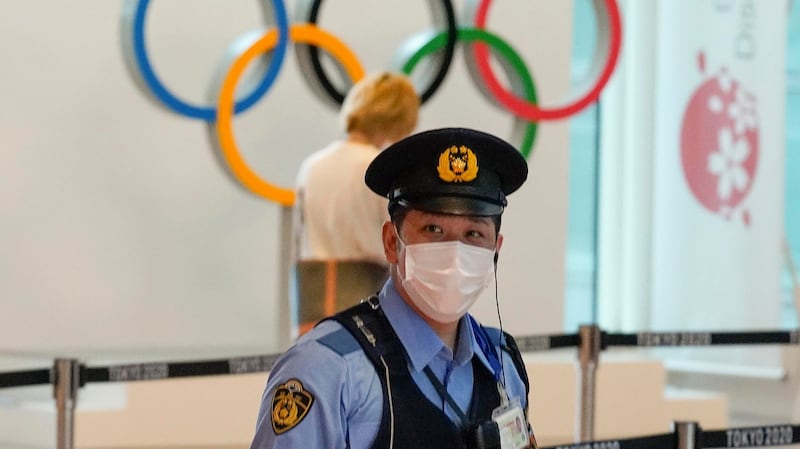The original plan was to test the endurance over 26.2 miles of hard slog through the streets of Tokyo and get some idea of what it's like to run a marathon in Japan. With good timing too, about three months out from the 2020 Olympics, only without the searing heat and crippling dehydration and risk of me pissing out droplets of my own blood.
It would have been keeping with a sort of pre-Olympic tradition: sign up for long run in the host city and then write home about the experience in all its painful glory. How can anyone properly describe what it’s like to endure a tortuously prolonged effort in often cruel or unusual conditions without tasting at least some of it yourself?
So the Tokyo International Marathon offered that exact chance. The good people at Sports Travel International helped secure a late "media" entry (Tokyo gets around 350,000 applicants for the 35,000 entries each year) and Sunday, March 1st, was circled in red with just six weeks out. This being March 2020, before a lot of other original plans around the world suddenly went very far astray . . .
They say the only way to hit the ground at the Olympics is running, this was more like a crawl
It’s a pity, because such an experience was always good to call on when the Olympics got under way, not just when it came to running the marathon. That first test run, before the 2004 Olympics, happened to be on the original route, the 26.2 hilly miles from the town of Marathon into Athens, and it nearly killed me. And that classic story of Pheidippides running back to announce the news the Athenians had held off the invading Persians, shouting “nenikikamen” (“rejoice, we have conquered”), then promptly dying, as well he might, still resonates in the hearts and legs of marathon runners everywhere.
There were long runs before Beijing and in London and then in Rio too, although it quickly became clear from several months out that Tokyo 2020 would present a different sort of endurance test, especially once postponed into the summer of 2021. Suddenly it was about getting ready for the flight, getting on the flight, then getting off the flight at the other the end, all at the mercy and peril it seemed of Covid-19 and the layers of restrictions the Tokyo organisers had no choice but to wrap around it. Or in this case perhaps a marathon wrapped up in the sudden enigma of a long-haul pandemic Olympics flight.
They say the only way to hit the ground at the Olympics is running, this was more like a crawl.
It’s the same for everyone. All visiting athletes or coaches, judges or journalists, are required to produce not one but two negative PCR tests, 96 and 72 hours before arrival in Tokyo, with an additional Japanese government form to be completed at the exact point of testing (easier said than done, believe me).
There’s also an app to be downloaded, assuming you get the right barcode, which tracks your whereabouts in Tokyo, and for us journalists an activity plan for the first 14 days of your stay which needs to be approved in advance, otherwise you ain’t going nowhere, are you?
Here's the scene: Lufthansa offer one of the more convenient routes and times into Tokyo's Haneda Airport (which is where you want to land, trust me), and by noon on Tuesday, Gate 56 at Frankfurt Airport resembled a meeting of the United Nations; German, obviously, France and Spanish, Croatian and Serbian, Finnish and Dutch, with plenty other clear Olympic uniforms from Brazil to Ghana, and Uruguay too.
For whatever reason they didn’t all make it through the first Covid-cert check. Departure was delayed 90 minutes, while the unlucky ones had their baggage removed from the under stowage. All told these days the plane can accommodate about 150, still there wasn’t a spare seat.
All social distancing went out the window once the flight took off, obviously. The Croatian wrestling coach in the seat next to me did his best to keep his distance, but when one quick spray of his hand sanitiser ended up in my eye then you know it’s still too close for any comfort.
We left Frankfurt to the news that the head of the Tokyo organising committee, Toshiro Muto, had just said a last-minute cancellation couldn't be ruled out, and there was no telling how things might be at other side, time difference or not (we were 13 hours cramped on that flight, you do the maths).
Because on arrival, the Tokyo marathon journey was only beginning: first, the arrival of Japanese immigration to hand around more forms to be filled before anyone gets off the plane (flight transfers first, Tokyo residents next). Only then did the real test of endurance begin, most of the 150 passengers Olympics bound, naturally, therefore required to deliver and pass another PCR test on arrival – this one involving the spitting of your own saliva into a small test tube, identified by another bar code. And done with perfect friendliness by the way.

It went on like this for another two hours, at the accreditation desk, then the government immigration desk, where again they checked every one of the bulging wallet of documents, then double-checked one more time just in case.
It was around here my colleague Johnny Watterson drifted slightly off the pace, perhaps for good reason. With a lot more full-to-capacity 747s arriving into Tokyo over the final 48 hours before throw-in, from all nationalities, now more than ever these Olympics are simply about lasting the distance.
And as Noel Carroll always said about the marathon, it's not the distance that kills, it's the pace. Especially when there still isn't any guaranteed finish line in sight.













